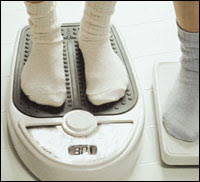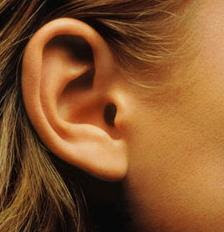
About Microwaves
Microwaves are used to detect speeding cars, to send telephone and television communications, and to treat muscle soreness. Industry uses microwaves to dry and cure plywood, to cure rubber and resins, to raise bread and doughnuts, and to cook potato chips. But the most common consumer use of microwave energy is in microwave ovens.
The Food and Drug Administration (FDA) has regulated the manufacture of microwave ovens since 1971. On the basis of current knowledge about microwave radiation, the Agency believes that ovens that meet the FDA standard and are used according to the manufacturer's instructions are safe for use.
What is Microwave Radiation?
Microwaves are a form of "electromagnetic" radiation; that is, they are waves of electrical and magnetic energy moving together through space. Electromagnetic radiation ranges from the energetic x-rays to the less energetic radio frequency waves used in broadcasting. Microwaves fall into the radio frequency band of electromagnetic radiation. Microwaves should not be confused with x-rays, which are more powerful.
Microwaves have three characteristics that allow them to be used in cooking: they are reflected by metal; they pass through glass, paper, plastic, and similar materials; and they are absorbed by foods.
Cooking with Microwaves
Microwaves are produced inside the oven by an electron tube called a magnetron. The microwaves are reflected within the metal interior of the oven where they are absorbed by food. Microwaves cause water molecules in food to vibrate, producing heat that cooks the food. That's why foods high in water content, like fresh vegetables, can be cooked more quickly than other foods. The microwave energy is changed to heat as it is absorbed by food, and does not make food “radioactive” or "contaminated."
Although heat is produced directly in the food, microwave ovens do not cook food from the "inside out." When thick foods are cooked, the outer layers are heated and cooked primarily by microwaves while the inside is cooked mainly by the conduction of heat from the hot outer layers.
Microwave cooking can be more energy efficient than conventional cooking because foods cook faster and the energy heats only the food, not the whole oven compartment. Microwave cooking does not reduce the nutritional value of foods any more than conventional cooking. In fact, foods cooked in a microwave oven may keep more of their vitamins and minerals, because microwave ovens can cook more quickly and without adding water.
Glass, paper, ceramic, or plastic containers are used in microwave cooking because microwaves pass through these materials. Although such containers can not be heated by microwaves, they can become hot from the heat of the food cooking inside. Some plastic containers should not be used in a microwave oven because they can be melted by the heat of the food inside. Generally, metal pans or aluminum foil should also not be used in a microwave oven, as the microwaves are reflected off these materials causing the food to cook unevenly and possibly damaging the oven. The instructions that come with each microwave oven indicate the kinds of containers to use. They also cover how to test containers to see whether or not they can be used in microwave ovens.
FDA recommends that microwave ovens not be used in home canning. It is believed that neither microwave ovens nor conventional ovens produce or maintain temperatures high enough to kill the harmful bacteria that occur in some foods while canning.
Microwave Oven Safety Standard
The Food and Drug Administration (FDA) has the responsibility for carrying out an electronic product radiation control program mandated by the Electronic Product Radiation Control provisions of the Food Drug and Cosmetic Act. Through it's Center for Devices and Radiological Health, FDA sets and enforces standards of performance for electronic products to assure that radiation emissions do not pose a hazard to public health.
A Federal standard limits the amount of microwaves that can leak from an oven throughout its lifetime to 5 milliwatts (mW) of microwave radiation per square centimeter at approximately 2 inches from the oven surface. This limit is far below the level known to harm people. Microwave energy also decreases dramatically as you move away from the source of radiation. A measurement made 20 inches from an oven would be approximately one one-hundredth of value measured at 2 inches.
The standard also requires all ovens to have two independent interlock systems that stop the production of microwaves the moment the latch is released or the door opened. In addition, a monitoring system stops oven operation in case one or both of the interlock systems fail. The noise that many ovens continue to make after the door is open is usually the fan. The noise does not mean that microwaves are being produced. There is no residual radiation remaining after microwave production has stopped. In this regard a microwave oven is much like an electric light that stops glowing when it is turned off.
All ovens must have a label stating that they meet the safety standard. In addition, FDA requires that all ovens have a label explaining precautions for use. This requirement may be dropped if the manufacturer has proven that the oven will not exceed the allowable leakage limit even if used under the conditions cautioned against on the label.
To make sure the standard is met, FDA tests microwave ovens in its own laboratory. FDA also evaluates manufacturers' radiation testing and quality control programs at their factories.
Although FDA believes the standard assures that microwave ovens do not present any radiation hazard, the Agency continues to reassess its adequacy as new information becomes available.
Microwave Ovens and Health
Much research is under way on microwaves and how they might affect the human body. It is known that microwave radiation can heat body tissue the same way it heats food. Exposure to high levels of microwaves can cause a painful burn. The lens of the eye is particularly sensitive to intense heat, and exposure to high levels of microwaves can cause cataracts. Likewise, the testes are very sensitive to changes in temperature. Accidental exposure to high levels of microwave energy can alter or kill sperm, producing temporary sterility. But these types of injuries - burns, cataracts, temporary sterility - can only be caused by exposure to large amounts of microwave radiation, much more than the 5mW limit for microwave oven leakage.
Less is known about what happens to people exposed to low levels of microwaves. Controlled, long-term studies involving large numbers of people have not been conducted to assess the impact of low level microwave energy on humans. Much research has been done with experimental animals, but it is difficult to translate the effects of microwaves on animals to possible effects on humans. For one thing, there are differences in the way animals and humans absorb microwaves. For another, experimental conditions can't exactly simulate the conditions under which people use microwave ovens. However, these studies do help us better understand the possible effects of radiation.
The fact that many scientific questions about exposure to low-levels of microwaves are not yet answered require FDA to continue to enforcement of radiation protection requirements. Consumers should take certain common sense precautions.
Have Radiation Injuries Resulted from Microwave Ovens?
There have been allegations of radiation injury from microwave ovens, but none as a direct result of microwave exposure. The injuries known to FDA have been injuries that could have happened with any oven or cooking surface. For example, many people have been burned by the hot food, splattering grease, or steam from food cooked in a microwave oven.
Ovens and Pacemakers
At one time there was concern that leakage from microwave ovens could interfere with certain electronic cardiac pacemakers. Similar concerns were raised about pacemaker interference from electric shavers, auto ignition systems, and other electronic products. FDA does not specifically require microwave ovens to carry warnings for people with pacemakers. The problem has been largely resolved because pacemakers are now designed to be shielded against such electrical interference. However, patients with pacemakers may wish to consult their physicians if they have concerns.
Checking Ovens For Leakage
There is little cause for concern about excess microwaves leaking from ovens unless the door hinges, latch, or seals are damaged. In FDA's experience, most ovens tested show little or no detectable microwave leakage. If there is some problem and you believe your oven might be leaking excessive microwaves, contact the oven manufacturer, a microwave oven service organization, your state health department, or the nearest FDA office.
A word of caution about the microwave testing devices being sold to consumers: FDA has tested a number of these devices and found them generally inaccurate and unreliable. If used, they should be relied on only for a very approximate reading. The sophisticated testing devices used by public health authorities to measure oven leakage are far more accurate and are periodically tested and calibrated.
Tips on Safe Microwave Oven Operation
- Follow the manufacturer's instruction manual for recommended operating procedures and safety precautions for your oven model.
- Don't operate an oven if the door does not close firmly or is bent, warped, or otherwise damaged.
- Never operate an oven if you have reason to believe it will continue to operate with the door open.
- As an added safety precaution, don't stand directly against an oven (and don't allow children to do this) for long periods of time while it is operating.
- Users should not heat water or liquids in the microwave oven for excessive amounts of time.
Erupted Hot Water Phenomena in Microwave Ovens
The FDA received reports in the past of serious skin burns or scalding injuries around people's hands and faces as a result of hot water erupting out of a cup after it had been over-heated in a microwave oven. Over-heating of water in a cup can result in superheated water (water heated past its boiling temperature), which does not appear to be boiling.
This type of phenomena occurs if water is heated in a clean cup. If foreign materials such as instant coffee or sugar are added before heating, the risk is greatly reduced. If superheating has occurred, a slight disturbance or movement such as picking up the cup, or pouring in a spoon full of instant coffee, may result in a violent eruption with the boiling water exploding out of the cup.
What Can Consumers Do to Avoid Super-Heated Water?
Users should follow the precautions and recommendations found in the microwave oven instruction manuals, specifically the heating time. Users should not use excessive amounts of time when heating water or liquids in the microwave oven. Determine the best time setting to heat the water to the desired temperature and use that time setting regularly.
Other Tips for Microwave Oven Use
- Some ovens should not be operated when empty. Refer to the instruction manual for your oven.
- Clean the oven cavity, the outer edge of the cavity, and the door with water and a mild detergent. A special microwave oven cleaner is not necessary. Do not use scouring pads, steel wool, or other abrasives.



















